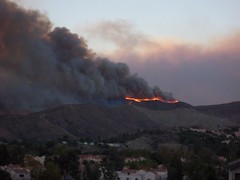 A while back, I subscribed to the RSS feed for the comments on 2¢ Worth so that I could be notified when people had added conversation to any of my blog entries. When it happens, I just click from the aggregator into the blog so that I can follow the thread from the original entry.
A while back, I subscribed to the RSS feed for the comments on 2¢ Worth so that I could be notified when people had added conversation to any of my blog entries. When it happens, I just click from the aggregator into the blog so that I can follow the thread from the original entry.
This morning, I had some catching up to do, so I just read through them clicking into the context of the comment only a couple of times. A couple of things formed together for me. First, someone, commenting on one of the posts — I don’t know which — suggested that what I was talking about was the purpose of education. Why do we put children in our schools? What are schools for?
Then I run across a comment that I was mostly impressed with. But the author, a network filter administrator, said,
When I go through the process of adding a new Universal Resource Locator (URL) to the filter database I actually personally evaluate the site to see which of the state standards can be illustrated or in any way taught by the content of the site. If I find that none can it is immediately blocked.
Interpreted literally, this reminds me of a comment made by a keynote speaker I recently saw at a state school boards association conference. It was a great keynote, funny, and thought provoking — in a good way. But the speaker said something that I, personally, do not agree with.
If your second grade teacher teaches a fantastic unit on dinosaurs, but dinosaurs are not on the test, then that teacher is doing harm to your children. Anything that’s taught that’s not on the test, is doing harm to your children.
Are the standards of instruction intended to be the extent of the instruction? The answer to that question may well be, “Yes.” But should the state define the limit of instruction? I don’t think so. Safety, I would suggest, should be the only limit to learning in our schools.
Added the Next Day:
I want to be completely fair to the two people I have referred to here. The keynote speaker was quite good, and right on target with most of the message. The statement about teaching to the test and the filter administrator’s strategy both come out of caring for their students. They are not at fault. The fault is an environment where AYP becomes so important, so critical to the schools and the district, that these actions make perfect sense. As much as it has done for children who were being virtually ignored before, NCLB does not enable. It constrains us from the innovation that is so desperately needed in our schools today.
Image Citation:
Ozawa, Ryan. “Dinosaurs Alive!.” Hawaii’s Photostream. 16 Dec 2006. 31 Oct 2007 <http://flickr.com/photos/hawaii/324231234/>.


 Something was happening with the paper’s web site. On Sunday, they’d hosted 175,235 visits. But the next day, it climbed to 878,351 and on Tuesday it peeked at 1,054,354. Of course the San Diego wildfires explained the interest (3.2 million visits for the week) and the increased commenting (19,010). But what struck the staff of the newspaper was the dramatic shift in tone. They were accustomed to comments and sudden spikes in their volume. But these online conversations were typically “contentious as readers bicker about politics, immigration and other divisive issues.“
Something was happening with the paper’s web site. On Sunday, they’d hosted 175,235 visits. But the next day, it climbed to 878,351 and on Tuesday it peeked at 1,054,354. Of course the San Diego wildfires explained the interest (3.2 million visits for the week) and the increased commenting (19,010). But what struck the staff of the newspaper was the dramatic shift in tone. They were accustomed to comments and sudden spikes in their volume. But these online conversations were typically “contentious as readers bicker about politics, immigration and other divisive issues.“ I have a general rule about my public speaking. Don’t follow kids — and never follow a school board member who’s just read The World is Flat. After my experiences at the New York State School Board’s Association conference in NYC this week, I have a new one. Don’t follow The Fonz!
I have a general rule about my public speaking. Don’t follow kids — and never follow a school board member who’s just read The World is Flat. After my experiences at the New York State School Board’s Association conference in NYC this week, I have a new one. Don’t follow The Fonz!


 I’ve not been looking forward to this weekend as much as I guess I should. Yesterday, I was at the Cybercitizenship Summit at Yahoo, in Sunnyvale, and on Tuesday, I’ll be in San Diego. So rather than spend more than half a day on planes and in airports flying home, I’m just camped out in a mid-range 92 year old hotel in San Francisco.
I’ve not been looking forward to this weekend as much as I guess I should. Yesterday, I was at the Cybercitizenship Summit at Yahoo, in Sunnyvale, and on Tuesday, I’ll be in San Diego. So rather than spend more than half a day on planes and in airports flying home, I’m just camped out in a mid-range 92 year old hotel in San Francisco.